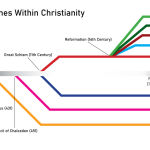This post, by John Bohannon, is a response to the review of Tony Jones of Bohannon’s book on preaching in the emerging church. (Tony’s site here.)
The Secret of the Toe Tap: A Response to Tony Jones’s Critique of Preaching and the Emerging Church
 Imagine, if you will, that you are given an assignment to write a book about the hitting practices of four of the best left-handed hitters in major league baseball—Joe Mauer, Ichiro Suzuki, David Ortiz, and Josh Hamilton. Your aim is to capture each player’s method of batting in addition to representing their core beliefs and philosophy about the role of the hitter within the game itself. But here is the catch; you may not get the chance to interview these sluggers in person or see them pound out a hit or homer in their home stadium.
Imagine, if you will, that you are given an assignment to write a book about the hitting practices of four of the best left-handed hitters in major league baseball—Joe Mauer, Ichiro Suzuki, David Ortiz, and Josh Hamilton. Your aim is to capture each player’s method of batting in addition to representing their core beliefs and philosophy about the role of the hitter within the game itself. But here is the catch; you may not get the chance to interview these sluggers in person or see them pound out a hit or homer in their home stadium.
What should you do? Does the possibility of no home field interview or edge of your seat ball park experience remove all hope of accurately capturing and assessing the hitting beliefs, philosophies, and practices of these players? Would it be a fatal flaw to even attempt such a task?
The above hypothetical opening resembles the argument raised by Tony Jones in his review of my book, Preaching & The Emerging Church: An Examination of Four Founding Leaders: Mark Driscoll, Dan Kimball, Brian McLaren, and Doug Pagitt. His response to the questions above is a definitive yes as he applies it to my work. While I will respond to this concern, I want to first reply to three others raised in his review.
First, why should McLaren be exempt from a work that analyzes the preaching within the Emerging Church? Yes he has retired from the full time pastorate, but does this mean that he has stopped preaching and teaching altogether? Does this mean that a historical analysis of his homiletical practices is no longer valid or that his influence has ceased? Like player cum Coach Ozzie Guillen, his change in roles did not lessen his impact on the game. If anything, it heightened it.
Second, why does the fact that McLaren, Kimball, or Driscoll’s lack of explicit works on preaching have to be considered “problematic”? This is one reason why I wrote the book. For those who want to learn about the preaching theology, philosophy, and methodology of key players within the Emerging Church movement without having to spend two years digging through books, articles, interviews, book chapters (on preaching), conference notes, blogs, videos, recorded lectures, and audio sermons, in order to discover, as Tony writes, the “homiletical postures and strategies of each,” then this might be the right book for them. It is my hope that the reader will find my research of value, or as Tony puts it, “unparalleled,” and the book as a whole to be a “thorough record of these four men and their approaches to the kerygmatic act”—thus a helpful contribution to the homiletical conversation rather than a problem.
A third concern is the direction the review takes when Tony addresses part three, “Contending with Biblical Revelation.” Tony is undoubtedly a gifted, intelligent, and pithy writer. I get it (although I did have to look it up) when he gives my work a two word Shark Sandwich-like review—“entirely predictable.” Predictably, Tony and I would disagree on how to interpret his terse assessment, but I do appreciate his critique and I pray I learn from the insights provided. In this same section Tony oddly implies that I hide my biblical convictions in the footnotes. I prefer to assess my notes as adding documentation of specific evidence that affirms my position stated in the main body of the work. I have no desire to be “dodgy” or “hard to pin down.” I hope this, again in the words of Tony, “literary thoroughness” will provide the reader the data necessary to make their own conclusions.
Last, regarding this third concern, I disagree with the words chosen by Tony for his summary of my position on these four preachers. Let me explain. I disagree and agree with some of their homiletical positions—be it their theology, philosophy, or methodology—as I am confident they would with me. Yet my disagreement is not meant to be a personal attack nor is my agreement meant to be an idolistic endorsement. If the term “odious” simply implies a strong disagreement about the issues raised then fine, and if the phrase “my hero” simply means I appreciate certain aspects of one’s preaching ministry then fine. On this latter point, I hope all preachers would affirm that there is only one hero and His name is Jesus (Phil 2:9-11; Col 1:18, 28).
Returning to the hypothetical baseball assignment and the methodology concern raised by Jones, if the writer could not observe or interview these hitters in person would it definitively equate to a strike out or loss? Maybe it would, but not necessarily. In today’s digital age a writer could glean a great deal about each batter’s swing from a plethora of sources. Here is but one example. If you were to Google these players you would quickly discover that there are instructional hitting video’s available. Unlike the explosive speed of the bat in real-time, these video’s slow down the pace so that you can discern frame by frame the exact batting methodology of the player. For example, I discovered a teaching video featuring Hamilton and a University Baseball Coach where the coach walks the viewer through each facet of Josh’s stance and swing explaining one of the secrets to his success—the Toe Tap method.
Now that is something you could capture in an interview but would it necessarily prove any more helpful than an endorsed video of the same content? Or would watching a game, even from VIP seats, prove more valuable? If a writer takes a crack at the assignment with no firsthand interviews, is it possible for his work to still provide valuable insights for the reader? I think so. Yet how could the writer know for sure if he got a hit with his research? Maybe the best answer would come from the players themselves. Let them answer the inquiry, “Did the writer represent your hitting convictions correctly?”
Concerning my book, I find it encouraging to read statements from Pagitt who shared with Tony that “he got me right” or “He’s done his homework”—other preachers represented in the book have shared similar remarks. This is all I could have asked for as a writer knowing that one of my aims was to represent their homiletical convictions as clear, concise, and correct as possible. Yes significant differences (and agreements) do appear in the critique section and I pray that these differences (and agreements) will become the focus of any further conversations—knowing what is at stake as preachers discern how to best proclaim the person and work of Jesus Christ, the gospel.
Could more have been done in the research area such as visit Tony and Doug in Minneapolis? Yes, the possibilities are endless and I take responsibility for any shortcomings. Yet I do hope Tony and those who commented on his review will find solace in knowing that I was able to see—in person—each preacher as I traveled to cities (and faith communities) such as Dallas, Seattle, Raleigh, and Charlotte to hear them either preach and/or teach on theology, homiletics, and ecclesiology. What I discovered, which I found honorable of each preacher, is that what they professed in their preaching and teaching was exactly what they professed in their writings—books, articles, and blogs. And like Hamilton’s Toe Tap secret, I also learned some insider homiletical tips; not just from digital recordings but rather from conversations with some of the preachers themselves (e.g., p.82, fn. 119).











